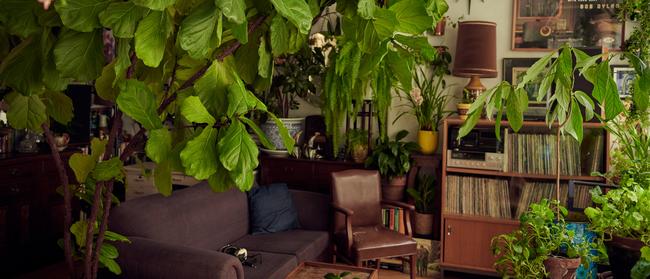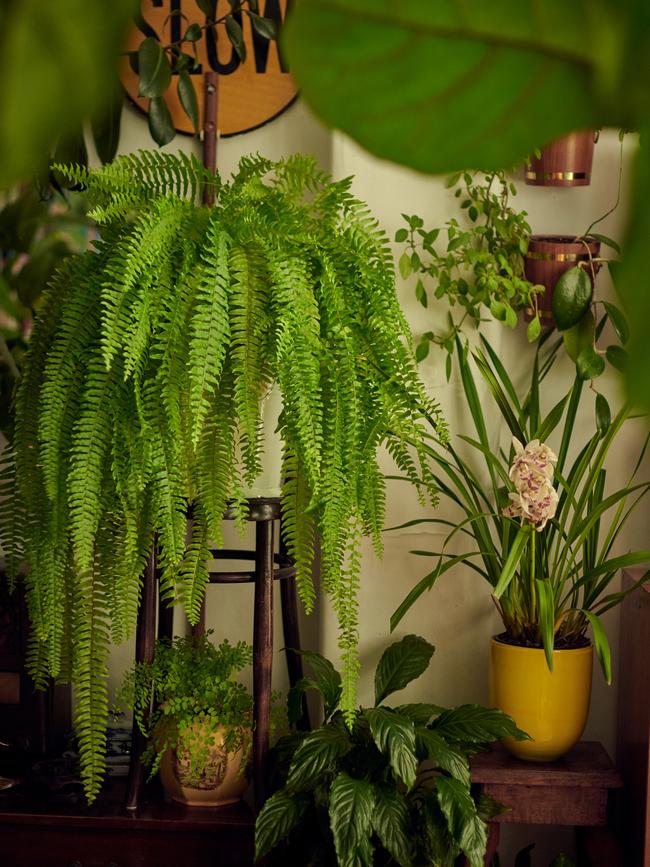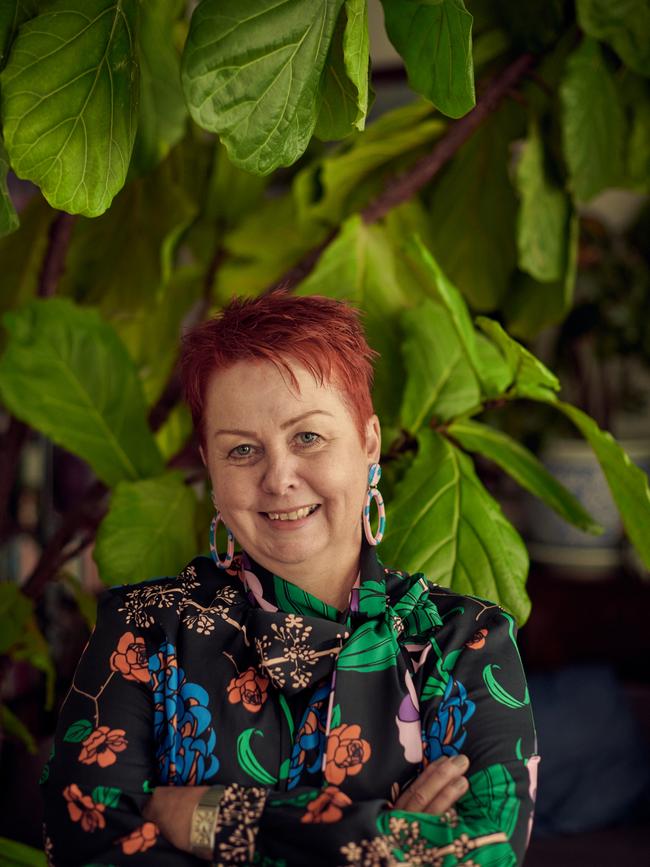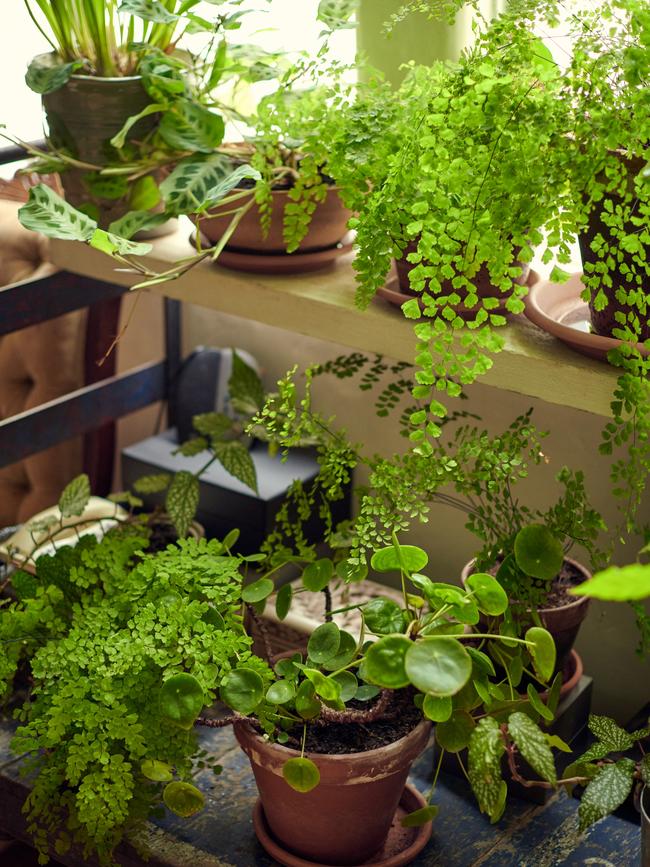Is this Australia’s greenest home?
This one-bedroom apartment with 120 plants is like a world all of its own.

Home
Don't miss out on the headlines from Home. Followed categories will be added to My News.
Think it’s a bother taking care of that one sad pot plant sitting on your windowsill?
Well, spare a thought for Gaylene Krajewski who has a whopping 120 plants (and counting) spread throughout her one-bedroom apartment. What’s even more impressive, Gaylene doesn’t even have a balcony, so all her plants, including some fruit trees, thrive indoors. As a florist, she is an authority in keeping plants alive, but says with absolute confidence, everyone can grow plants, even in a tiny space.
“People will say to me, ‘I can’t grow anything, all my plants die, but there are plants that are indestructible like a xanthe or a rhipsalis. You could go away for a couple of weeks and they will be just fine.
Gaylene’s apartment is an impressive display of all kinds of plant species and while small flora is what most of us would think befitting for a limited space, she proudly shows off a gigantic fiddle leaf plant that is more than three metres across and four metres wide.

“I bought that eight years ago for $40 from Bunnings and it swings from one side of the apartment to the other,” she says. “He basically owns the apartment and arches over the couch and the dining table.” Every nook and cranny of Gaylene’s apartment has been lovingly filled with plants. “They’re on the top of the bookcase and hanging off chairs … I have used up every possible space in the whole apartment and when I think I have run out of space, I find more. I just can’t help myself,” says Gaylene. “Along the windows are the geraniums which need lots of sun, and things like my lemon and magnolia trees, and oak trees, which would usually be outside. Since I don’t have a balcony I place these by the windows to get the most out of the sun.”

She says the key to keeping her plethora of plants happy is as simple as fully opening the blinds first thing in the morning – and her efficient watering schedule.
“I look at every plant at least once a week. One day I will water all the plants I can reach without climbing on a step ladder and on another day I will water all the high or hanging plants,” she says. “I think that when you buy a plant you should choose the day of the week you will water it. All my plants sit in a tray and if there’s water in the tray, then that’s enough. Stop watering, otherwise you’re drowning it or just washing nutrients away.”
Gaylene also prescribes to the quirky and fun method of talking to her plants to keep them happy and healthy. “I believe in talking to them and playing nice music. I like to encourage them. Though, I have a maidenhair fern that struggled. One day I said, ‘that’s it, you’re on your last chance, one more week and you better improve.’ I swear to God, it had new sprouts by the end of the week.”

Greener Spaces Better Places has enlisted Charlie Albone to encourage Australians to keep plants in the home, to not only relax and energise us, but improve our indoor air quality. A recent Greener Spaces Better Places study found that simply seeing plants or being surrounded by them can be an effective mechanism for dealing with stress.
Charlie reiterates that gardening in small spaces in the home is always possible, you just need to commit to the plant’s care to reap the benefits.
“I’ve killed many a plant in my life and guess what? They make great compost,” he says. “Don’t be afraid to try. You need to find a nice, bright spot in your home or if you really don’t have a lot of room, then create a green wall.
It makes a great impact without taking up too much footprint. You could probably plant 40 plants per square metre.” If you are really reluctant to nurture plants at home, then join a community garden centre. “Get out there and try it, the health benefits of gardening are enormous,” says Charlie.

You may not have heard of a ‘horticultural therapist’, but it’s someone we probably all need to bring serenity to our busy lives. Horticulturist Toni Salter, who runs programs via her website theveggielady.com, says the mental and physical benefits of gardening are well documented.
“There are certain bacteria found in natural soil that lifts human serotonin levels – that’s why gardeners are such happy people,” she says. “During the pandemic, Australians became much more aware of the importance of green spaces.
“Working with people who have anxiety, they get very caught up in their own thoughts. There is a nice distraction and positive reinforcement and
even hope, in growing and nurturing a plant.”

With home ownership becoming harder to achieve for young people, especially in the capital cities, she has worked with clients to create their own garden sanctuary in their apartment or even in a communal space.
“I love helping people in apartment blocks come together over a garden. You have people who live next door to each other, but have never interacted, come together to set up a garden club. They would harvest communally, they compost together and they are partners in organic waste,” says Toni.
“It’s been a transformative exercise. It’s not just about the fresh produce they create, but it’s having those social connections which are so important. In times of a pandemic, we saw how lonely and uncertain life was. There was a disconnection and it’s lovely to be able to bring people together.”
More Coverage
Originally published as Is this Australia’s greenest home?





